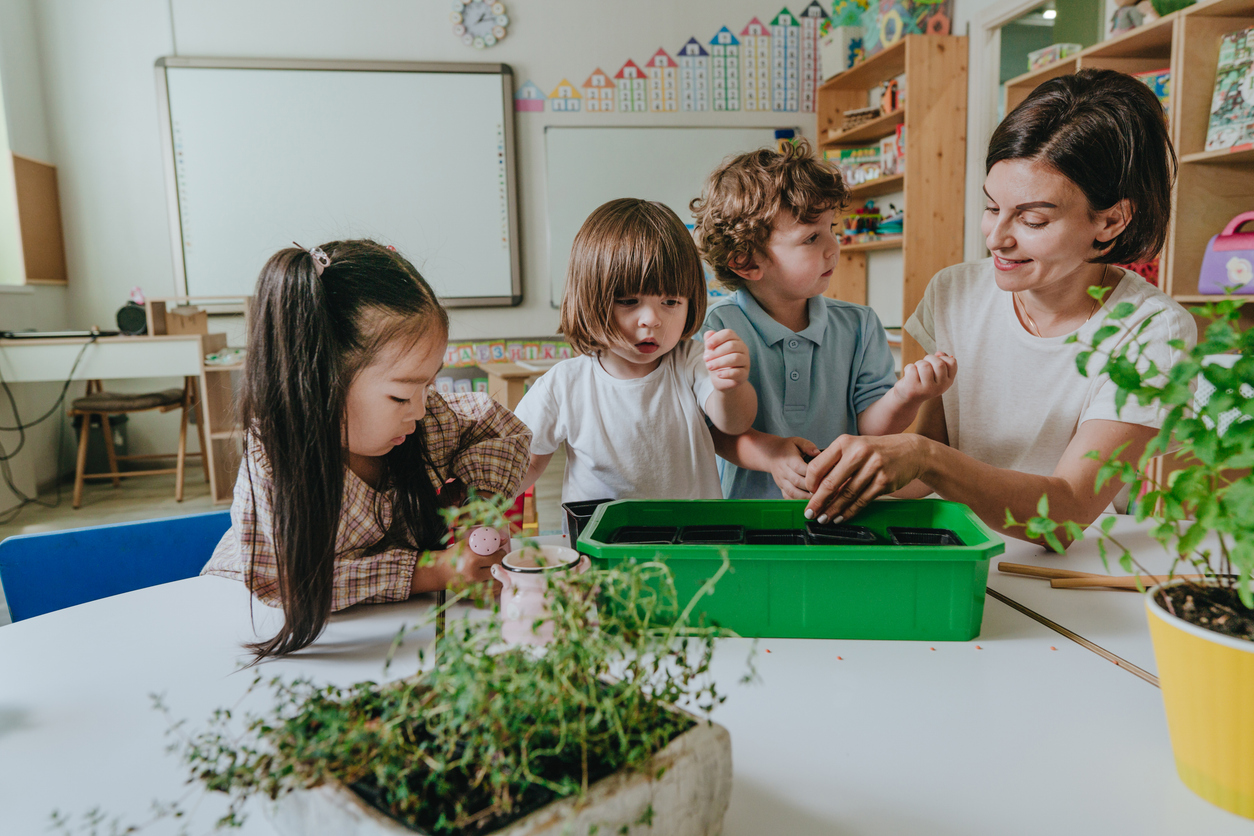Preparing for Yesterday’s Society

Erica Corbin Head of School, The Cathedral School of St. John the Divine
It is easy to understand why discussions of identity and belonging sometimes feel overwhelming in a world where new terms are introduced, and current terms become antiquated, almost daily. However, there are no new identities, only louder discussion of those experiences. Marginalized identities—those that aren’t commonly held by historic decision-makers and leaders—have always been present and visible in our society if one knew where to look and was willing to do so.
Our current demographics tell an important story about who we are as a national community, regardless of what we might see on television screens or the front page of newspapers. More than 50 percent of all American children under age five are either Asian, Black, Indigenous, Latino, or multiracial, with Asian Americans as the fastest growing racial and ethnic group in the country. Over 20 percent of young adults in America are LGBTQ+. While more than one-third of America’s young adults have no religious affiliation, Islam is the fastest growing religion in the United States. Slightly more than 4 percent of children in the U.S. have a disability. Around 5 percent of young Americans identify as transgender or nonbinary, and more than 50 percent of young Americans know someone who is transgender. These larger percentages are notable on their own, and the smaller percentages may feel more significant when compared to the number of Americans with a peanut allergy (1 percent), or with red hair (2 percent), or who live in New York City (3 percent).
As the nation expands its racial and cultural variety, our children will be expected to have greater knowledge of and comfort with a wide range of racial and cultural identities. Your child’s future classmates, roommates, romantic partners, and employers are likely to have an identity that differs from their own. Your child’s personal and professional success will depend on what they know about, and how they engage with, a broad variety of people who are unlike themself.
Engaging in discussions about equity and belonging is like a lifelong etiquette class. Sometimes we are so worried about using the “proper fork” (not to mention our concerns about what others will think of us for using the “wrong fork”) that we forget the actual goal of etiquette lessons: to ensure that everyone at the table knows how to engage respectfully and, through that practice, has a sense of belonging. The good news is that if we grow up receiving etiquette lessons throughout childhood, the practice becomes second nature and the knowledge stays with us. The same is true for learning about, and from, those who bring different identities and life experiences to the table.
One of the best ways to ensure your child’s current and future success is by finding a school community where they have routine, informed exposure to a variety of cultures, histories, and lived experiences. From the very start of their lives, every child deserves representation of what they are and exposure to what they are not. Seeking this type of educational setting for your child is not solely selfless—you will benefit as much, if not more, from a diverse school community. If you truly involve yourself with the life of the school as a parent or caregiver, your own knowledge, comfort, and social circle will expand accordingly beyond your own identities. What a beautiful experience to share with your child, as a family.
When it comes to race, gender, sexuality, age, ability, and other aspects of identity, true academic excellence requires a deep understanding of the connection between who we are and what we do. A successful school cannot keep academics to one side, with diversity, equity, and inclusion to the other side. True academic excellence is impossible without curriculum, classmates, and educators who intentionally reflect our society; what students know becomes irrelevant if they can’t find authentic ways to share that knowledge with others in a meaningful, respectful manner.
A curriculum is visionary and robust when it brings many different perspectives, histories, problems, and solutions before students and asks, “What do you think?” A valuable challenge is to consider how you can help people feel confident in what they bring to the table—while acknowledging history and having the humility to understand why it is necessary to bring others along—and work in partnership while crafting answers to the world’s big questions.
We must choose, every day, to be academic homes to a wide range of practices and beliefs, bound together through the tenet of respecting the dignity of every human being. It is a monumental mission and an immense undertaking, and we are thankful not to be alone in this work.
The society of the future, heralded in science fiction stories, has already arrived, with little fanfare and big implications. The hard truth is that too many communities are still not yet ready for yesterday’s society. But they can be. We must ensure that we engage in these louder discussions of identity, and that our children do so as well. Our social worlds are likely larger and more diverse than those of our parents, and the same will be true of our own children. Our day-to-day school experiences should reflect this. In the words of author Octavia Butler, “There’s nothing new under the sun, but there are new suns.”
Works Cited
“The 2020 Census of American Religion: The American Religious Landscape in 2020.” PRRI, 8 July 2021, https://www.prri.org/research/2020-census-of-american-religion/#:~:text=A%20large%20majority%20(71%25),Jehovah’s%20Witnesses%20or%20Orthodox%20Christians.
“Annual State Resident Population Estimates for 6 Race Groups (5 Race Alone Groups and Two or More Races) by Age, Sex, and Hispanic Origin.” United States Census Bureau, 8 Oct. 2021, https://www.census.gov/programs-surveys/popest/technical-documentation/research/evaluation-estimates/2020-evaluation-estimates/2010s-state-detail.html.
“Muslim Americans Celebrate Ramadan.” U.S. Embassy & Consulates in Italy, 18 Apr. 2022, https://it.usembassy.gov/muslim-americans-celebrate-ramadan/.
Orth, Taylor. “From Millionaires to Muslims, Small Subgroups of the Population Seem Much Larger to Many Americans.” YouGovAmerica, 15 Mar. 2022, https://today.yougov.com/topics/politics/articles-reports/2022/03/15/americans-misestimate-small-subgroups-population.
Ruiz, Neil G., et al. “What It Means to Be Asian in America.” Pew Research Center Race & Ethnicity, Pew Research Center, 2 Aug. 2022, https://www.pewresearch.org/race-ethnicity/2022/08/02/what-it-means-to-be-asian-in-america/.
“The State of America’s Children® 2021: Child Population.” Children’s Defense Fund, 28 Mar. 2021, https://www.childrensdefense.org/state-of-americas-children/soac-2021-child-population/.
Erica Corbin is Head of School at The Cathedral School of St. John the Divine, a school for students in Kindergarten through 8th grade in Manhattan. Learn more at cathedralnyc.org
This article first appeared in the 2023 issue of the Parents League Review. Get the current issue of the Review free with a family membership. Or purchase it separately.











